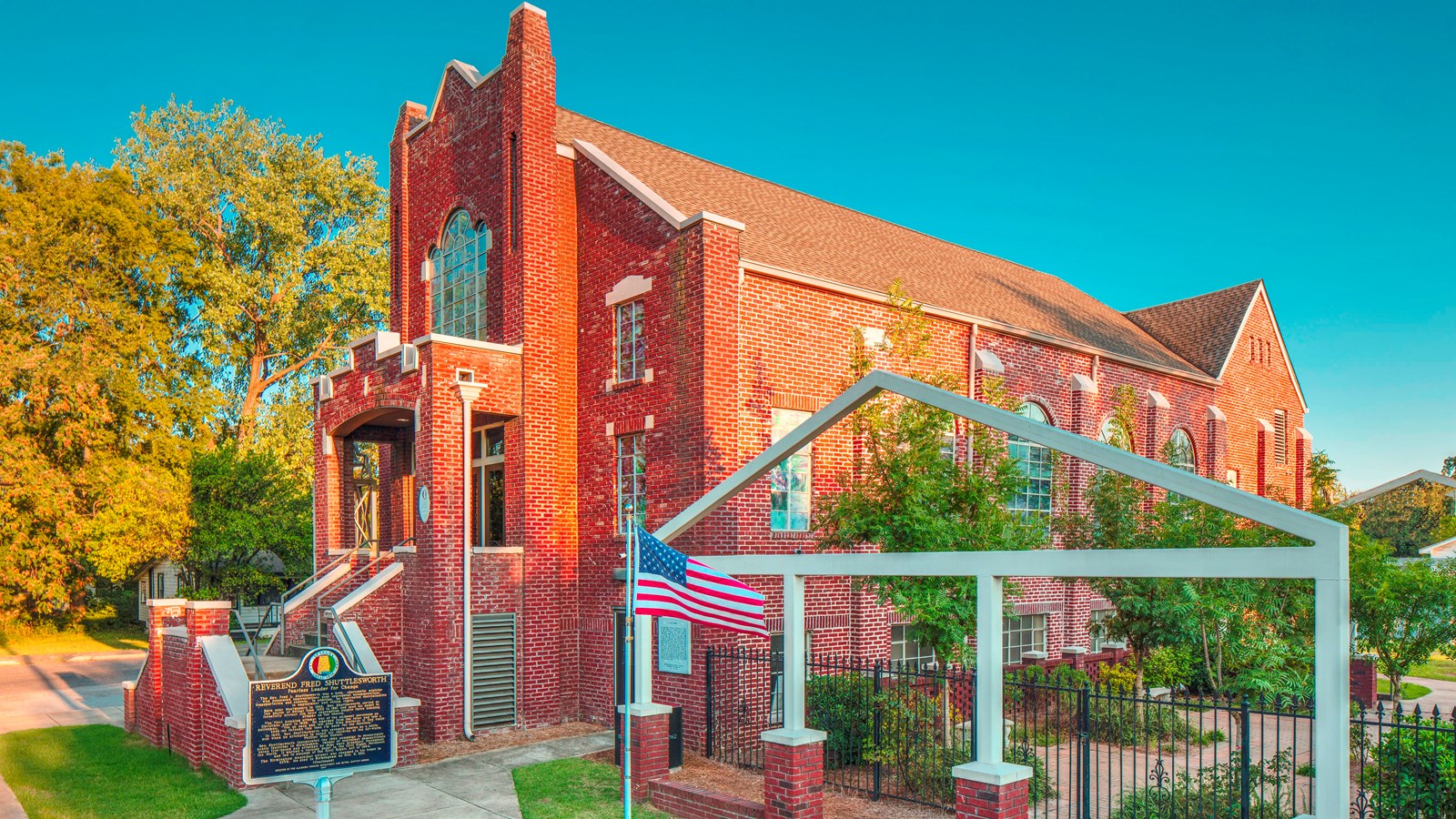Last updated: June 28, 2021
Place
The Historic Bethel Baptist Church

Courtesy of the Greater Birmingham Convention & Visitors Bureau
Cellular Signal, Historical/Interpretive Information/Exhibits, Information, Parking - Auto, Scenic View/Photo Spot
Built in 1926, The Historic Bethel Baptist Church was the epicenter of a non-violent, direct action protest movement for human and civil rights during the 1950s and 60s. Then under the leadership of Reverend Fred L. Shuttlesworth, the church and its leader served as linchpins in the 1961 Freedom Rides and 1963 desegregation efforts in Birmingham.
In 1956, Rev. Shuttlesworth and other ministers formed the Alabama Christian Movement for Human Rights (ACMHR) when the state prohibited the National Association for the Advancement of Colored People (NAACP) from operating in Alabama. The Church was one of sixty active members in the ACMHR and served as ACMHR headquarters from 1956-1961. Weekly mass meetings provided an outlet for emotional testimony, soul-lifting music, impassioned preaching, and fundraising. In the face of unspeakable violence and hatred, The Historic Bethel Baptist Church leaned on its faith to fan the flames of a movement that would eventually desegregate one of the most racist cities in the nation.
White supremacists bombed the Church and parsonage 3 times. One of the bombings took place in 1956 on Christmas night, with Shuttlesworth and his family inside. When Shuttlesworth and his family emerged from the rubble unharmed, he and his followers took this as a sign that God was with them. The next day, as planned, Shuttlesworth, other members of the ACMHR, and over 200 other African Americans rode in the white sections of city buses to protest segregation in transportation. Despite the efforts of white supremacists to stamp out the church-led Movement through intimidation, civil rights activism grew in Birmingham and eventually paved the way for the Civil Rights Act of 1964.
Today, parishioners attend services in a new church built a block away, but the original church is maintained as a historic site that welcomes visitors and stands as a testament to the accomplishments of the Modern Civil Rights Movement. The historic site, including its guardhouse and parsonage, are National Historic Landmarks. Visitors can sit in the same pews as movement participants and watch a short documentary on the life of Rev. Shuttlesworth and the civil rights movement. A marker outside the building commemorates the spot where white supremacists planted a bomb intended to kill Shuttlesworth as he slept in bed. Tours that wind through the historic buildings and around the grounds help visitors envision what life was like in the late 1950s and early 1960s, and the courage it took for a church, a family, and a neighborhood to stand behind a belief that life could and should be better.
